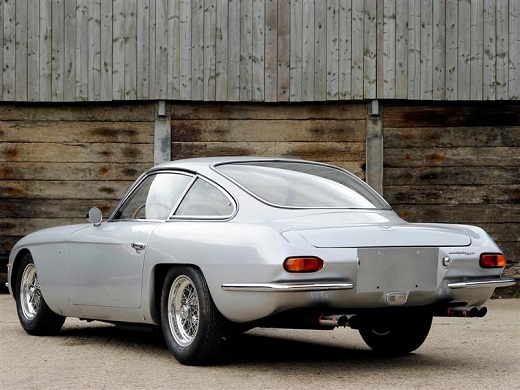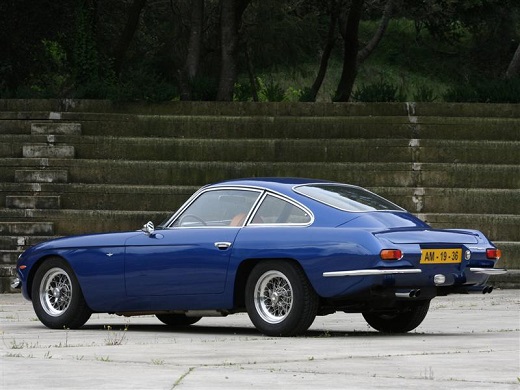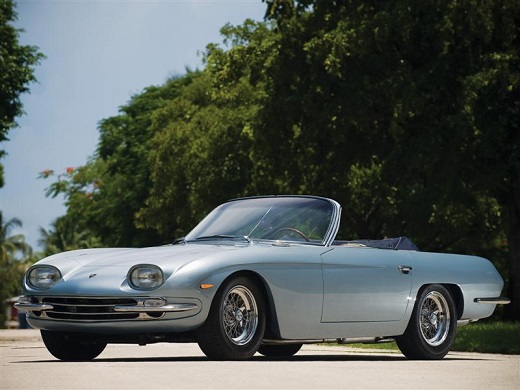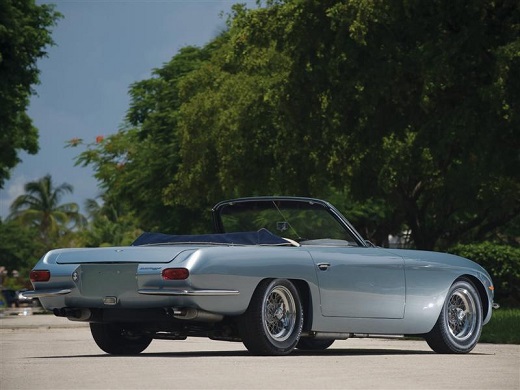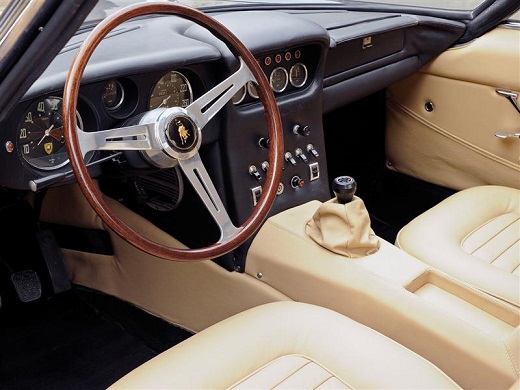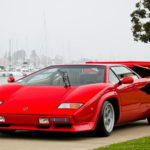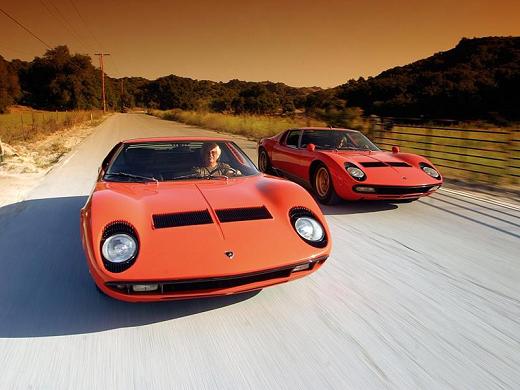Lamborghini 350 / 400GT - Model history
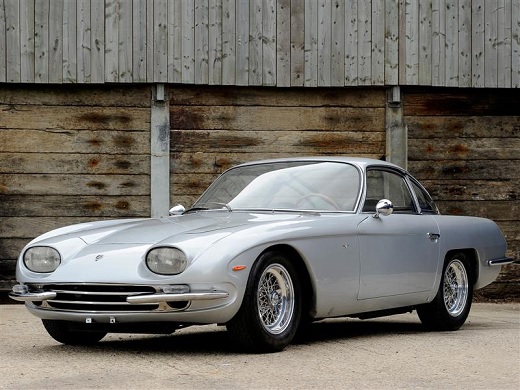
With innovation, state-of-the-art technology and specific design, Feruccio Lamborghini very quickly made his former friend from Modena bitterly repent već Although much has already been written about the famous quarrel between the two giants of the Italian car industry that led to Lamborghini Enzo Ferrari initially stunned the car and managed to provide the young company with enough popularity and financial support to survive the beginning and establish itself as one of the most famous names in sports motoring in the world. The success and breakthrough of Lamborghini during the 60's was really meteoric but not undeserved because the model's offer was top notch, both in terms of technical solutions and quality and usability… However, the car that started the series of ultimate athletes from Sant Agate was the 350GT model introduced in 1964 Feruccio Lamborghini did not have a clear picture of what kind of car he wanted at the beginning, but he knew what he had to avoid in order to create a model that would be better than the then Modena athletes.
For starters, the Lamborghini needs to be far better than the Ferrari (which, according to legend, was the cause of the quarrel between the two industrialists), it must be more technically advanced and be easier and more comfortable to drive. All of this stated that the future Lambo should be a racial GT coupe in order to satisfy all the intentions of the creator and to equally engage in the fight for small buyers, with Ferrari and Maserati. To create a car like this, Feruccio knew he needed a team of skilled engineers, designers and designers. The circumstances that came to his hands are the big purge that Enzo conducted in Ferrati in 1962, which left many high-profile professionals out of work, as well as the fact that he lives in Italy in the 60s, which was full of numerous (later very famous) car-related names. Very soon, he gathered around three people who will make the Lamborghini blade and who will celebrate this factory worldwide. For starters, there was Giotto Bizzarrini, an incredibly talented and energetic engineer, a man who was responsible for the great success of the Ferrari 250 GTO and later the Iso plant and was in charge of engine construction.
After him, there was Giampaolo Dallara, a chief engineer whose specialty was chassis and construction and who, in addition to his Ferrari experience, was also employed by Maserati. The design of the new model was the responsibility of Franco Scaglione, one of the most underrated, most eccentric and mysterious names in the world of automotive design. a man who made himself famous for eccentric creations like the Alfa Romeo BAT or the ATS 2500 GT. Although he joined the New Zealander a little later, Bob Wallace was a test driver and one of the most responsible people for the superb behavior of a Lamborghini car on the road. With a team like this, the development of the car was very fast and the first prototype (admittedly without the engine) was ready in 1963. Having garnered a lot of attention at the Turin Salon that year, the 350GTV came into use and announced that Feruccio was preparing something very serious. Bizzarrini, meanwhile, was completing the engine development according to Lamborghini's wishes. Specifically, the engine had to be a V12 with over 300 hp, top technology and quality.
Giotto responded to the demands of his employer with a fantastic 12 liter V3.5 machine with two cams in the head and 358 hp at almost 8,000 rpm. Still, Ferrucio was not happy because he did not want a race car but a cultured and powerful drive more appropriate to a GT car. Therefore, Bizzarini reduced its power to 270 hp, retained all other qualities and increased the reliability of the units. The final design (not so different from the prototype) was finished and the bodywork was entrusted to the famous Milanese house Carrozzeria Touring. The car, named Lamborghini 350GT, was proudly presented to the public and the specialist press in 1964. Critics from the automotive press were excellent and everyone agreed that the factory's debut in every respect was a fantastic car. The top-end drive also delivered superior performance (6.8 sec to 100 km / h and 250 km / h max speed), and a technical layout that included a tubular chassis, independent suspension and four disc brakes, exceptional stability and ride manners. Buyers were initially a little suspicious, especially after finding out about the price ($ 13,900), but the quality of the car won and sales went off.
The reaction of the world public was such that both Ferrari and Maserati had to admit that they had a worthy opponent. The new 350GT was officially a two-seater, and the first specimens had an unusual 2 + 1 configuration. Namely, behind the front pair of seats, another seat was mounted in the middle rear of the cabin. Soon the concept was abandoned, so all models were two-seater as Feruccio was preparing to produce models with room for 2 + 2 passengers. Although the Labmorghini 350GT could be the base for a great race car, Feruccio was resolutely against racing, finding it unnecessary to spend power, money and time, unlike its competitor Enzo Ferrari who couldn't imagine a grid on the track without one of his cars . With the further development of the engine, in 1965, the light of day was also seen by the 400GT version, that is, the model with increased aggregate volume and power of 320 hp. Although only 23 of these cars were made (until 1966), the 400GT was faster and more aggressive than the 350GT and was the work of Bizzarri himself, unable to watch his racial aggregate suffocated by Ferucci's fear of excessive power and revs.
Combined with 320 hp and aluminum bodywork, the 400GT is perhaps the best offshoot of this model series. Ferucci's intention to make a real GT car finally came true in 1966 with the introduction of the 400GT 2 + 2 version. Although almost identical in appearance, the 350GT and 400GT 2 + 2 did not have a single body panel and did not match the dimensions, and the 400GT 2 + 2 had to be slightly larger and taller to accommodate another pair of seats and thus facilitating the transport of (conditionally) four passengers. The series, built from 1966 to 1968, proved to be the most successful, and as many as 247 units were made, it was a great combination of a powerful engine (320 hp) and increased usability, and was not bothered by the popularity of more than $ 14,750. In the late 60s, this Lamborghini model was already near the end of its market life, and Feruccio focused on the production of the famous and fatal Miura, which replaced the 350-400 GT as the backbone of production. If we count all three series, 390 pieces were made (350GT - 120 pieces, 400GT - 23 pieces, 400GT 2 + 2 - 247 pieces), as well as a couple of models with other bodies and one prototype of the convertible.
Today, these cars are highly valued in the world of classic motoring, not only because of the fantastic history and story that accompanies them, but also because of the pure quality and excellent driving properties they possess. On the other hand, they represent the debut of a legendary factory and the work of many famous people from the industry. However, inversely proportional to the respect that Lamborghini 350-400GT 2 + 2 deserves, there is also a price, so good examples cost only a fraction of the price of equivalent Ferraris, of which they are obviously better, and that is a signal to serious collectors (if they don't already have) that this car include in your collection. Of course, they are not cheap, especially not for our conditions, but the history of the conflict, the desire to prove it, the ingenuity of the constructors and decent design make these models diamonds of the history of motoring and the ancestors of today's Lamborghinis.
Author: 426 Hemi
Images: Lamborghini
Retrieved from: www.brzabrzina.com
Recommendation of similar texts:

Hi there, I am Mladen and I am an auto enthusiast. I started this blog years ago to help like minded people share information about latest cars, car servicing ideas, used car info, exotic cars, and auto technology. You will find helpful articles and videos on a wide variety of cars - Audi, Mercedes, Toyota, Porsche, Volvo, BMW and much more. Ping us if you have anything cool to share on latest cars or on how to make older cars more efficient, or just want to say hi!

